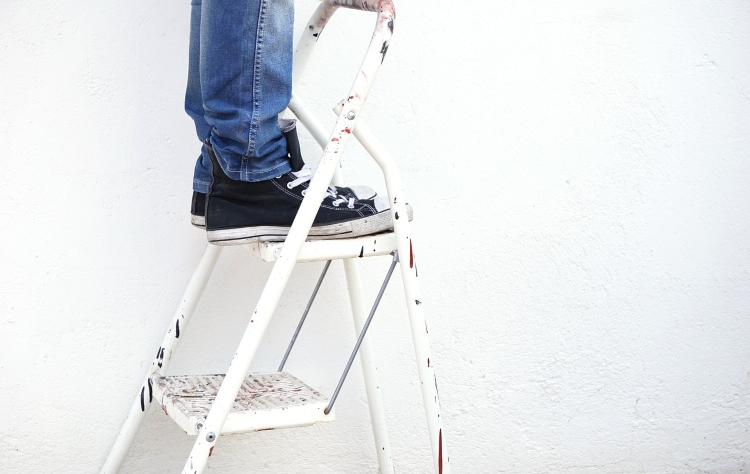
Ladders are invaluable tools when working at height – whether working in a domestic, trade, or industrial setting, a ladder is a key piece of equipment. However, one common issue that many ladder users encounter is wobbliness.
A wobbly ladder can be extremely dangerous and should never be ignored. In this blog post, we will explore the reasons behind a wobbly ladder, and discuss how to address this issue to ensure the safety of yourself and others around you.
These are a few factors that could be contributing to your ladder's wobbliness, and ladder stability should always be checked before you ascend.
1) Uneven ground
One of the most common reasons for a wobbling ladder is uneven ground. When the ladder legs are not resting on a stable and level surface, it can lead to instability. Before climbing any ladder, you should always take a moment to ensure that it has been placed on a firm and even surface. If you’re working out of doors or in any environment with an unstable surface, consider using ladder levellers to stabilize the ladder on uneven terrain.
2) Overreaching
Another common mistake that causes ladders to wobble is overreaching. When you extend too far beyond the ladder's sides or top rungs, you shift its centre of gravity, making it unstable.
To avoid overreaching when using a ladder, a good rule of thumb to follow is the ‘belt buckle’ rule. This rule states that your belt buckle should stay within the sides of the ladder, ensuring you maintain balance and stability.
3) Damaged or worn-out parts
Regular ladder inspection should be a part of your routine as these kinds of checks are crucial for identifying any damaged or worn-out parts that could contribute to wobbliness or instability. When doing your checks, keep an eye out for splintered rungs, loose nuts or bolts, and any signs of rust/corrosion.
If you find any such damages to your ladder, replace or repair any components promptly, and avoid using the ladder until any issues have been resolved.
Read More: Step Ladder Inspection Checklist
4) Wrong ladder type
There are a wide variety of different types of ladder on the market, and using the wrong type of ladder for your task can be a contributing factor to ladder instability. Ensure you choose the appropriate ladder for your needs, whether it’s a step ladder, extension ladder, or another type.
If you want to read more about selecting the right ladder for your task, check out our infographic on What Type of Ladder Should I Use?
5) Improper setup
Proper setup and angle are crucial for ensuring ladder stability. A ladder should be set up at a 75-degree angle or a 1:4 ratio (for every four feet of height, the base of the ladder should be one foot away from the wall or support structure).
Ensure that the ladders feet are firmly planted on the ground and that its top is securely against the support.
*
All in all, it’s safe to conclude that ladder stability should be your primary concern when working at height, since a wobbly ladder is a safety hazard that can lead to accidents and injuries. By understanding the common reasons behind ladder wobbliness and taking the appropriate precautions, you can ensure a stable and secure ladder setup.
You should always prioritise safety when using ladders, and remember that it’s best to take the time to address wobbliness before climbing – your safety is always worth the extra effort!
If you have any further questions regarding ladder safety, ladder stability, or any other working at height safety questions, feel free to reach out and contact Ladders UK Direct today. One of our team members will be more than happy to answer any questions you may have, and help you ensure that you’ve got the safest ladder setup possible.
Contact Us
Read More: How Often Should Ladders Be Inspected?

 Ladders
Ladders  Step Ladders
Step Ladders  Loft Ladders
Loft Ladders  Scaffold Towers
Scaffold Towers 








